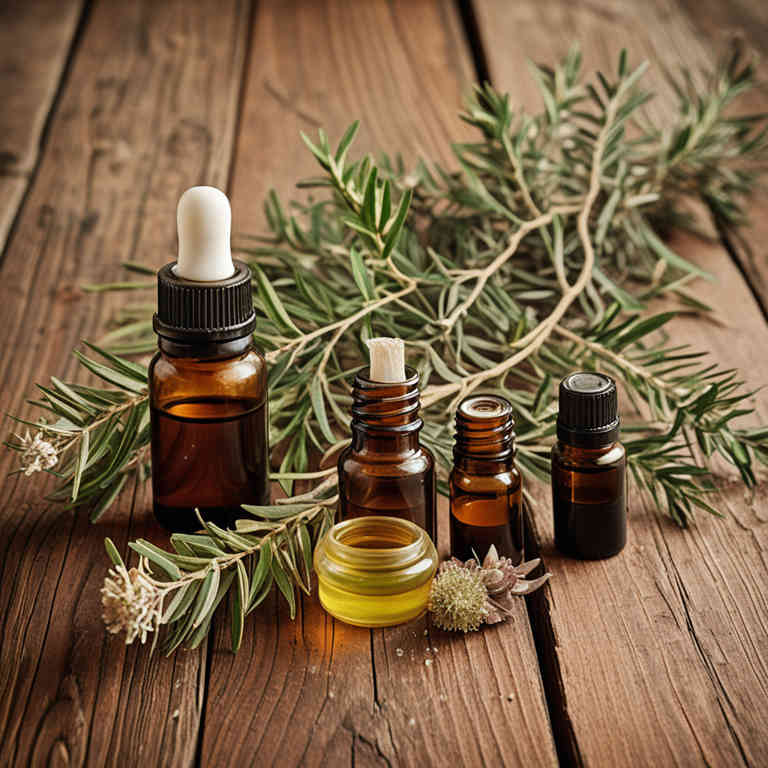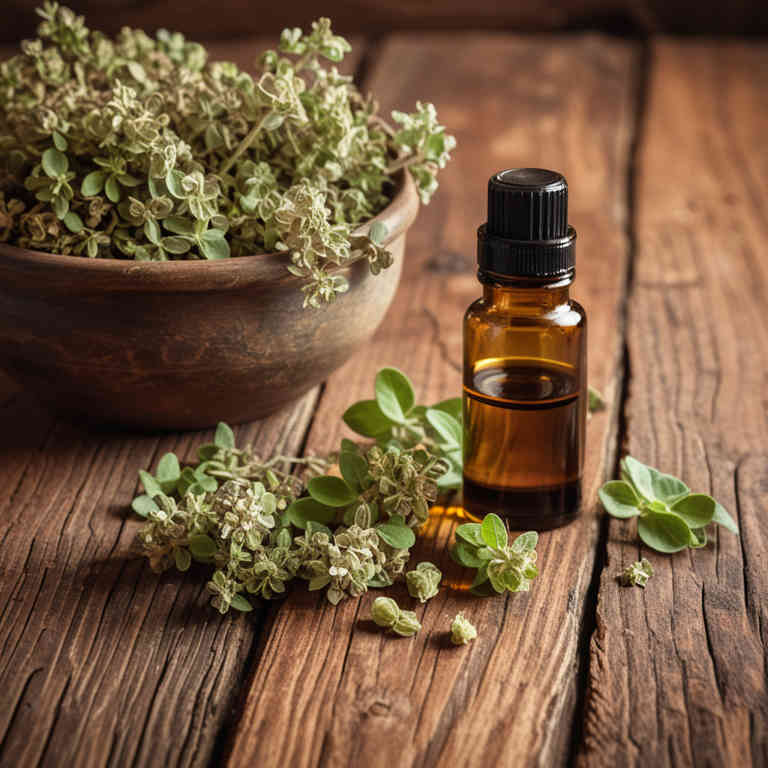10 Best Herbal Essential Oils For Infection

Herbal essential oils have been traditionally used for their antimicrobial properties to help combat infections, offering a natural alternative to conventional treatments.
Oils such as tea tree, eucalyptus, and oregano contain compounds like terpenes and phenols that exhibit antibacterial, antifungal, and antiviral effects. These oils can be applied topically or diffused to purify the air, supporting respiratory and skin health. However, they should be diluted properly and used with caution to avoid skin irritation or allergic reactions.
While they may provide supportive benefits, they should not replace professional medical treatment for serious infections.
FREE Herb Drying Checklist
How to make sure every batch retains maximum flavor, color, and aroma without the risk of mold or over-drying. Eliminate guesswork and trial-and-error, making herb drying faster, easier, and more efficient every time.
Table of Contents
1. Melaleuca alternifolia

Melaleuca alternifolia, commonly known as tea tree oil, is a popular essential oil derived from the leaves of the Melaleuca alternifolia plant, native to Australia.
It is widely recognized for its potent antimicrobial properties, making it effective against various bacteria, fungi, and viruses. Tea tree oil contains compounds such as terpinen-4-ol, which contribute to its ability to combat infections by disrupting microbial cell membranes. It is often used topically to treat skin infections, such as acne, athlete's foot, and fungal nail infections.
Due to its natural antiseptic qualities, tea tree oil is a favored alternative or complementary treatment in both traditional and modern herbal medicine.
2. Thymus vulgaris

Thymus vulgaris, commonly known as thyme, is a medicinal herb renowned for its potent essential oils, which are widely used for their antimicrobial properties.
The essential oil of thyme contains high concentrations of thymol, a powerful phytochemical known for its ability to combat a wide range of bacterial and fungal infections. Studies have shown that thymol can disrupt the cell membranes of pathogens, leading to their destruction and making thyme oil an effective natural remedy for respiratory and skin infections. Thymus vulgaris essential oil is often used in aromatherapy and topical applications to support immune function and reduce the risk of infections.
Due to its strong antibacterial and antifungal effects, thyme essential oil is considered a valuable component in natural health and alternative medicine practices for treating and preventing infections.
3. Cinnamomum zeylanicum

Cinnamomum zeylanicum, commonly known as cinnamon, produces essential oils that have been widely studied for their antimicrobial properties.
These oils contain compounds like cinnamaldehyde and eugenol, which exhibit potent antibacterial, antifungal, and antiviral activities. Research suggests that cinnamon essential oil can inhibit the growth of various pathogenic microorganisms, making it a valuable natural remedy for infections. Its ability to disrupt microbial cell membranes and interfere with enzyme systems contributes to its efficacy against infectious agents.
As a result, cinnamon essential oil is increasingly used in aromatherapy and alternative medicine to support the body's defense against infections.
4. Lavandula angustifolia

Lavandula angustifolia, commonly known as English lavender, is widely recognized for its therapeutic properties, including its ability to support the body's natural defenses against infections.
The essential oil derived from this plant contains potent antimicrobial compounds such as linalool and linalyl acetate, which have been shown to inhibit the growth of various bacteria and fungi. When used in aromatherapy or applied topically, lavender essential oil can help reduce inflammation and promote healing in infected areas. Its soothing properties also make it useful for managing symptoms associated with respiratory and skin infections.
Overall, Lavandula angustifolia essential oil is a valuable natural remedy that may complement conventional treatments for a range of infections.
5. Teucrium marum

Teucrium marum, commonly known as germander, contains essential oils that have been traditionally used for their antimicrobial properties.
These oils, rich in compounds like thymol and carvacrol, exhibit potent activity against various bacteria and fungi, making them useful in treating infections. Studies suggest that the essential oils from Teucrium marum can inhibit the growth of pathogens such as Staphylococcus aureus and Candida albicans. Due to their natural antibacterial and antifungal effects, these oils are often incorporated into topical treatments for skin infections and respiratory conditions.
However, it is important to use them under professional guidance to ensure safety and efficacy.
6. Curcuma longa

Curcuma longa, commonly known as turmeric, is a medicinal herb widely used for its anti-inflammatory and antimicrobial properties.
The essential oils derived from Curcuma longa contain bioactive compounds such as curcuminoids, which exhibit strong antibacterial and antifungal effects. These essential oils have shown potential in combating various infections, including those caused by bacteria and fungi. Research suggests that they may be effective in treating skin infections and reducing the risk of microbial resistance.
Due to their natural origin and broad-spectrum activity, Curcuma longa essential oils are increasingly being explored as a complementary therapy in infection management.
7. Eucalyptus globulus

Eucalyptus globulus, commonly known as mountain gum or blue gum, is a widely used species in the production of essential oils due to its potent antimicrobial properties.
The essential oil derived from its leaves contains compounds such as cineole, which exhibit strong antibacterial and antifungal effects, making it effective against a variety of pathogens. Studies have shown that eucalyptus globulus oil can inhibit the growth of bacteria like Staphylococcus aureus and Escherichia coli, as well as certain strains of fungi and viruses. It is often utilized in aromatherapy and topical applications to support the body's natural defenses against infections.
However, it should be used with caution, as it may cause skin irritation in some individuals and should not be ingested without professional guidance.
8. Rosmarinus officinalis

Rosmarinus officinalis, commonly known as rosemary, produces essential oils that have been traditionally used for their antimicrobial and anti-inflammatory properties.
These oils contain compounds such as 1,8-cineole, camphor, and alpha-pinene, which exhibit broad-spectrum activity against various bacteria, fungi, and viruses. Studies have shown that rosemary essential oil can inhibit the growth of pathogens responsible for respiratory and skin infections. Its ability to disrupt microbial cell membranes makes it a promising natural alternative for treating minor infections.
When used in aromatherapy or topical applications, rosemary essential oil may support immune function and aid in the body's natural healing processes.
9. Origanum vulgare

Oreganum vulgare, commonly known as oregano, is a herb widely used for its essential oils, which possess potent antimicrobial properties.
The essential oil of oregano contains high concentrations of carvacrol and thymol, both of which have been shown to exhibit broad-spectrum activity against bacteria, fungi, and viruses. Studies suggest that these compounds can inhibit the growth of pathogenic microorganisms, making oregano oil a valuable natural remedy for treating various infections. Its ability to disrupt microbial cell membranes and interfere with biofilm formation enhances its efficacy in combating infectious diseases.
Due to its strong antiseptic and anti-inflammatory properties, oregano essential oil is often used in aromatherapy and topical applications to support the body's natural defenses against infection.
10. Zingiber officinale

Zingiber officinale, commonly known as ginger, is widely used in traditional medicine for its antimicrobial properties, and its essential oil derived from the rhizome has shown potential in combating various infections.
The essential oil contains bioactive compounds such as zingiberene, gingerol, and shogaol, which exhibit antibacterial, antifungal, and antiviral activities. Studies suggest that ginger essential oil may inhibit the growth of pathogenic bacteria like Staphylococcus aureus and Escherichia coli, as well as certain fungal strains. Its ability to disrupt microbial cell membranes and interfere with their metabolic processes makes it a promising natural alternative for infection treatment.
However, further research is needed to fully understand its efficacy and safety in clinical applications.